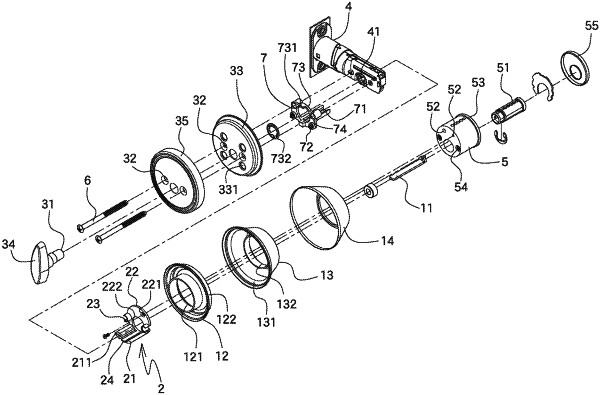| CPC E05B 9/08 (2013.01) [E05B 9/10 (2013.01); E05B 63/0017 (2013.01)] | 20 Claims |

|
1. A lock having a rotatable auxiliary positioning structure being adapted to connect with a latch element which includes a drive orifice, and the lock comprising:
a first locking assembly including a transmission unit and a guide seat connected on an end of the transmission unit, the guide seat having at least one guiding extension which extends from the guide seat, the first locking assembly further including a first body configured to drive the transmission unit, and the first body has at least one locking orifice;
a second locking assembly including a driving element connected with the transmission unit, a connecting position being defined when the first locking assembly and the second locking assembly are connected in a rotatable direction, and the transmission unit and the driving element are rotated axially, the second locking assembly includes at least one third connecting orifice corresponding to the at least one locking orifice;
at least one of the transmission unit and the driving element being rotatably received in and driving the drive orifice of the latch element; the at least one guiding extension being configured to be connected with the latch element and to guide the first locking assembly to be positioned on the connecting position along the rotatable direction opposite to the latch element; and
a defining element being passed through the at least one third connecting orifice and into at least one locking orifice, the defining element being configured to connect to the at least one locking orifice when the first locking assembly and the second locking assembly are located in the connecting position and thereby affixes the first and second locking assemblies together.
|